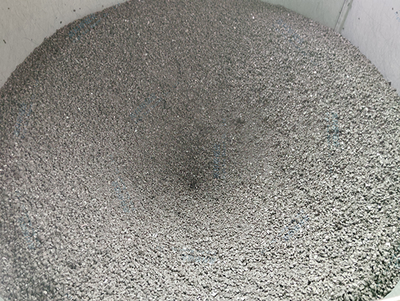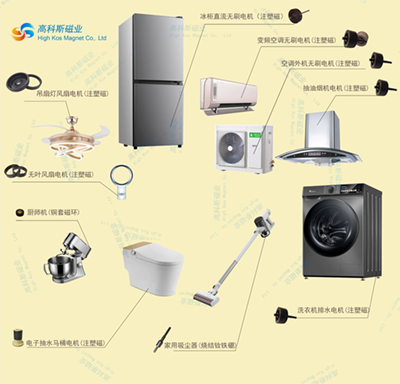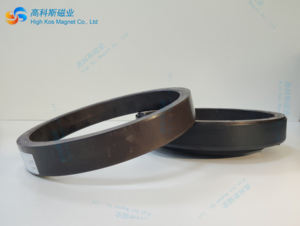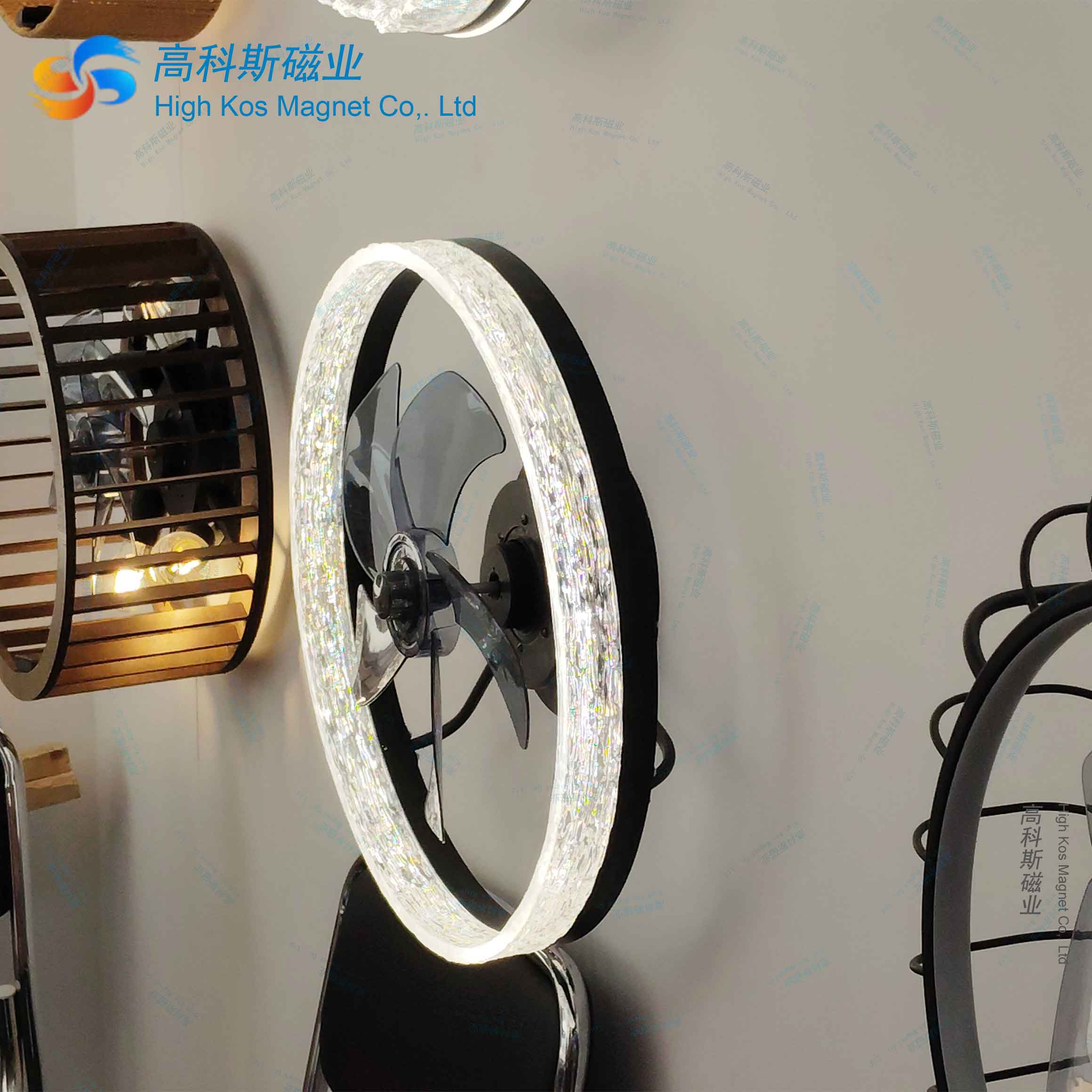Temperature stability of permanent magnets: detailed explanation of remanence, coercivity, and reversible coefficient
Permanent magnets are typically used as magnetic field sources to provide a stable magnetic field in a specific space. For precision instruments and magnetic devices, the stability of the magnetic field of the magnet is extremely critical, as it directly determines the accuracy and reliability of the instrument.
However, when external conditions change, such as temperature, time, electromagnetic fields, mechanical vibrations or impacts, radiation, chemical reactions, etc., the performance of magnets may be affected. This impact is mainly reflected in two aspects: first, the magnetic performance change caused by the change of magnetic domain structure, namely magnetic aging, which is reversible. When the magnet is re magnetized or recharged, its performance can mostly be restored; The second is the change in magnetic properties caused by changes in the microstructure of the magnet, namely tissue aging. This change is irreversible, and even if re magnetized or recharged, the magnetic properties cannot be restored.
The stability of magnets covers multiple aspects such as temperature stability, time stability, vibration and impact stability, electromagnetic field stability, and chemical stability. The stability of a magnet is usually described by the change in its performance parameters, such as the percentage change in remanence per 1 ℃ increase in temperature, or the annual decay of remanence at room temperature.
The performance stability requirements for magnets vary in different usage environments. For example, the magnets used on spacecraft need to remain stable under vibration and impact conditions, while also maintaining performance in environments with changes in radiation, temperature, and time; Magnets that work in acidic or humid environments (such as damp heat, salt spray, etc.) need to have good chemical stability; In working environments with significant temperature fluctuations, the temperature stability of magnets becomes a key focus of attention.
Temperature stability of 01 permanent magnet
In practical applications, devices made of permanent magnet materials are usually unable to operate at a constant temperature, and changes in ambient temperature can directly affect the magnetic properties of the magnets. In order to ensure that the equipment can still operate normally under temperature changes, the specific situation of the magnetic properties of the magnet changing with temperature must be considered when designing the magnetic circuit.
In order to quantitatively describe the effect of temperature on the performance of magnets, some temperature related stability parameters have been introduced. These parameters include remanence temperature coefficient (α Br), intrinsic coercivity temperature coefficient (α HcJ), reversible loss (Lrev) and irreversible loss (Lirr) of open circuit magnetic flux density, reversible temperature coefficient of open circuit magnetic flux density, heat-resistant temperature or maximum continuous operating temperature (Tm), etc. Among them, the temperature coefficient of remanence and the temperature coefficient of intrinsic coercivity are key performance indicators that commercial permanent magnets must provide.
02 Temperature coefficient of remanence and intrinsic coercivity
The temperature coefficient is essentially the relative rate of change of a physical quantity with temperature. The definitions of remanence temperature coefficient and intrinsic coercivity temperature coefficient in the temperature range from reference temperature T0 to a certain high temperature T are as follows, expressed in%/℃:
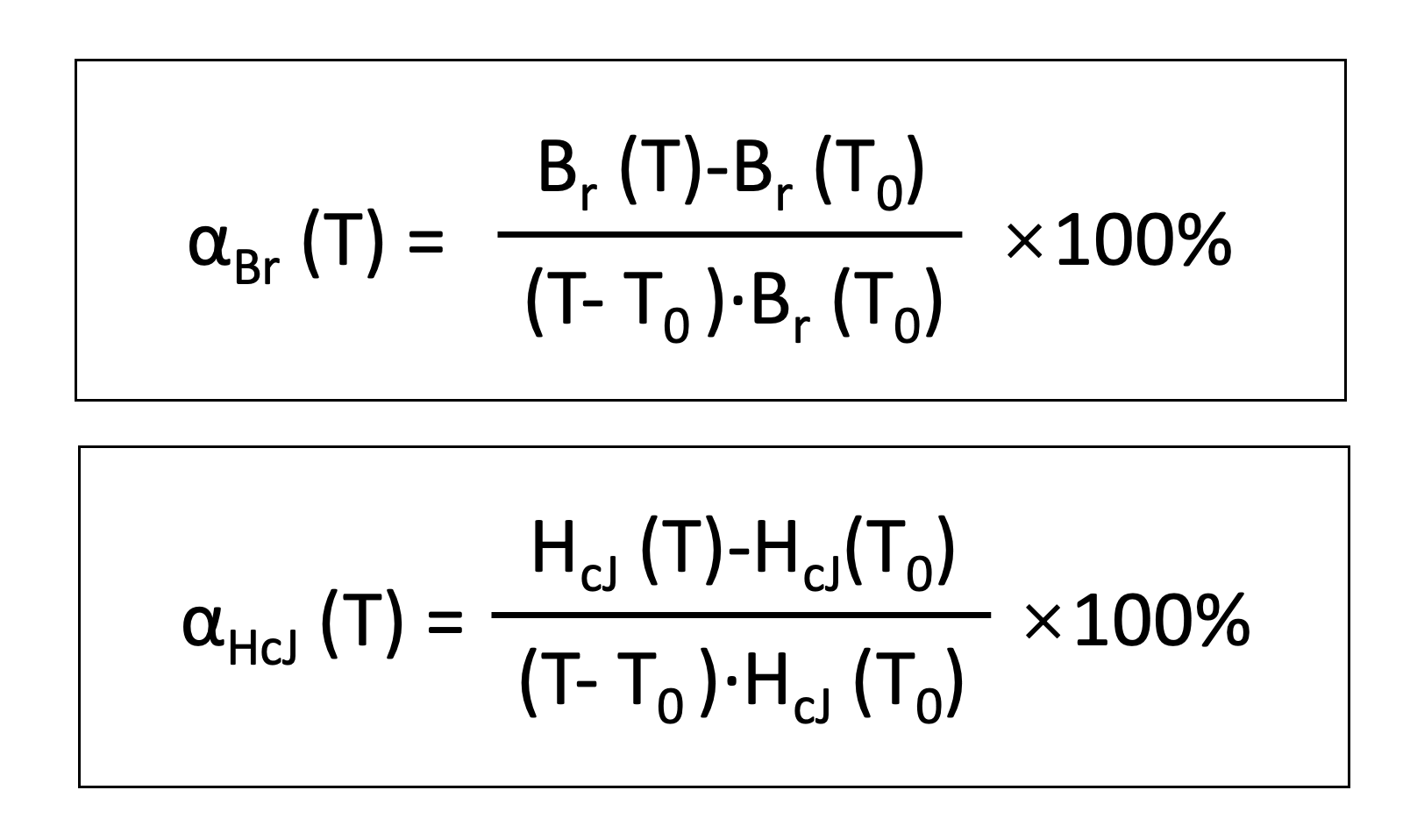
Among them, Br (T) and Br (T0) respectively represent the remanence values at temperature T and reference temperature T0 (HcJ is the same). Usually, the reference temperature T0 is selected as room temperature or 20 ℃, while the specific value of high temperature T is determined through negotiation between the supply and demand parties based on the usage environment. If α Br is a positive value, it indicates that the remanence increases with increasing temperature; If it is a negative value, it indicates that the remanence decreases with increasing temperature.
03 Reversible temperature coefficient
In practical applications, permanent magnets are often in an open circuit state with an air gap, and the characteristic of open circuit remanence (or open circuit magnetic flux) changing with temperature is more practically significant. When the ambient temperature rises from room temperature T ₀ to a given temperature T ₁, the open circuit magnetic flux will decrease from B (T ₀) to B (T ₁). If the temperature subsequently returns to room temperature T ₀, the open circuit magnetic flux usually returns to a new value B '(T ₀) slightly lower than the initial value B. Experiments have shown that when the temperature repeatedly changes between T ₀ and T ₁ and the temperature difference Δ T is not particularly large, the change in magnetic flux is linear and reversible.

The total magnetic flux loss from room temperature to high temperature during the entire heating process can be expressed as h ₜ=(B (T ₁) - B (T ₀))/B (T ₀) × 100%. This total loss can be further decomposed into two parts: reversible magnetic flux loss h ₙ=(B (T ₁) - B '(T ₀))/B' (T ₀) × 100% and irreversible magnetic flux loss h ₗ=(B '(T ₀) - B (T ₀))/B (T ₀) × 100%. From the linearly reversible PB '(T ₀) line, it can be seen that the change in magnetic flux is linear when the temperature varies within the range of T ₀ to T ₁. The average reversible loss of open circuit magnetic flux can be represented by the reversible temperature coefficient α.

In the concept of temperature coefficient, special attention should be paid to distinguishing the differences between the sub concepts of temperature coefficient, reversible temperature coefficient, and irreversible temperature coefficient. Aging treatment can significantly reduce the total magnetic flux loss h ₜ, irreversible magnetic flux loss h ₗ, reversible magnetic flux loss h ₙ, and reversible temperature coefficient α. Aging treatment (heating at a specific temperature for a period of time) before using or testing permanent magnets can eliminate unstable tissue structures in the magnets. The specific temperature and time for aging treatment need to be determined based on factors such as the type and purpose of the magnet. The reversible temperature coefficient α B (T) or remanence temperature coefficient α Br (T) mainly depends on the intrinsic magnetism of the material. By adding specific elements, the relationship between the saturation magnetization of the magnetic main phase and temperature can be changed, thereby altering the temperature coefficient of the magnet. For example, in neodymium iron boron magnets, partially replacing iron (Fe) with cobalt (Co) can significantly increase the Curie temperature of the main phase; Replacing some neodymium (Nd) with dysprosium (Dy) can also improve the performance of α B (T).
